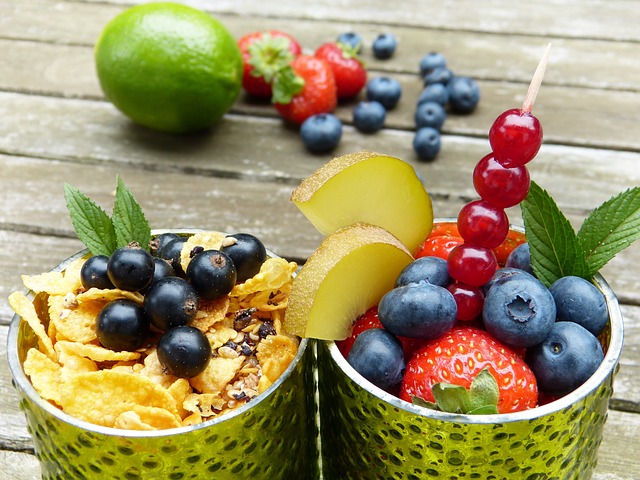If you’ve recently started dieting, you’ve probably noticed that you’re making a lot of progress in a short amount of time. You feel healthier and happier, and giddy with excitement!
Then, a few weeks in comes the all-dreaded plateau. This is when you don’t see any change in your weight, even though you’re careful about what you eat.
Even though it’s very common, plateaus can be a buzz-kill. So, to avoid feeling deflated, here are 10 tips for low-fat dieting to help you stay motivated and on track!
Click Here: The Easy Way To Track Your Low-Fat DietHow Low-Fat Dieting Can Work For You
1. Stay Hydrated
Studies show that drinking about 500ml water before each meal helps you eat less. It also enhances your feelings of fullness, so you have fewer cravings and increase your feelings of satiety.
Another thing you have to keep in mind is that we sometimes confuse thirst with hunger. So, instead of drinking, we fool ourselves into consuming more calories when it was actually a glass of nice, cool water we wanted all along.
If you’re tired of plain old water, try another calorie-free beverage, like sparkling water or herbal tea.
2. Don’t Deprive Yourself
Do you like chocolate chip cookies? Then, why not buy one from your local bakery instead of a whole box from the supermarket?
How about candy? Rather than purchasing an entire box of sugar-filled candy, why not get a smaller portion from the bulk bins?
This way, you can still enjoy your favorite foods without all the calorie overload. Remember, it’s all about moderation.
3. Be a Smart Snacker
Snacking doesn’t have to be a bad thing as long as you’re choosing to snack smart.
This means including more fresh fruits and vegetables. They have a high water content to keep you hydrated. Plus, they come jam-packed with good-for-you nutrients and minerals that keep you satiated for longer.
It’s not only about what you snack on, but also where you snack. For example, studies show that snacking in front of the TV, chances are you’re going to overeat and throw your diet off course.
4. Don’t Skimp on Protein
Proteins are the ultimate food choice for low-fat dieting.
It’s way more fulfilling than carbohydrates or fats. Plus, they boost your energy levels and keep you going strong for longer. Not only that, but proteins are the building blocks of muscle tissue. So, eating adequate portions of protein at each meal will preserve muscle mass.
Now, here’s the kicker: More muscle mass means fewer fat cells.
The reason? Well, your body burns more energy to keep those muscles big and strong. This means that by eating more protein and doing a couple of strength training exercises a week, you’ll start losing weight. And it’s all thanks to protein!
5. Eat More
Since you’re not depriving yourself of anything, you have to start eating right. One way to do that is to forget about eating those three traditional meals of the day.
Instead, focus on eating 5 or 6 smaller-sized meals. By dividing your daily calories over the span of the day and into smaller portions, your metabolism will work overtime.
As a result, you can better control your weight and appetite and help you maintain a healthy weight. Another way to do this is by making smarter choices. For example, pick foods that fill you up without adding on the calories.
Here are a few ideas to get you inspired:
- Pre-cooked grilled chicken
- Whole-grain pasta
- Salad greens
- Reduced-fat cheese
- Canned tomatoes
- Frozen vegetables
- Whole-wheat pita bread or tortillas
6. Don’t Eat a lot of Starch
When starchy foods are digested, your digestive system metabolizes them into your body’s fuel source, glucose. Every organ, tissue, and cell depends on glucose to do its job and stay healthy.
Then, any extra amounts of glucose get stored in the liver as glycogen.
Your body can store up to 600 grams of glycogen as a type of short-term energy supply. Anything more than that becomes converted into fat cells, called triglycerides. High levels of triglycerides have been associated with thickening of the artery walls, heart attacks, strokes, and other severe health issues.
So, make sure you limit your intake of starchy foods. According to the Food and Drug Administration (FDA), your recommended daily amount should be in the range of 100 and 280 grams per day.
7. Stock Up on Healthy Foods
If your pantry is filled with fattening foods, like ice cream, chips, and candy bars, you’re only making it harder on yourself.
Why not try cleaning everything out, so you don’t succumb to the temptations? Remember that no one is strong enough to walk away from a bag of chips, especially when we’re tired or stressed! You’ll convince yourself that you’ll only take two. Then, 10 minutes later, you’ve finished the entire bag of chips!
The best way to avoid all that guilt-ridden drama is to not keep anything like that to begin with. Then, if you’re really in need of a snack, reach for something healthier, like a bag of mixed nuts, granola bars, avocados, or yogurt with fruit pieces.
And if you’re in the mood for something with more salt or chocolate, make sure you have to leave the house to get it.
8. Don’t Skip Breakfast
Many people think that if they skip breakfast, they’ll lose weight. But nothing could be farther from the truth.
Eating a breakfast made up of protein-rich, high-fiber foods will reduce those mid-morning cravings that keep you snacking all day long. Plus, if you skip breakfast, you’ll be famished by the time lunch rolls around. Then, you’ll end up eating much more than you should. Accordingly, this will cause a late-afternoon slump where your brain feels foggy, and you’re too tired to get any work done.
9. Eat Smaller Portions
Super-sizing has made us unaware of how much we’re actually eating. Yet, one of the most important parts of dieting and leading a healthier lifestyle is to figure out your portions.
You can use measuring cups or a kitchen scale for a week to help you better understand servings and portions. For example, if you’re eating out, cut your portion in half. Then, eat one at the restaurant and ask the server to pack the other half.
Another way is to portion out your snacks. Instead of eating straight from the container or bag, put your snacks in bowls.
10. Focus on Fibers
Dietary fiber, also known as roughage, is the hard-to-digest part of the foods. It may sound harsh, but fiber plays a significant role in maintaining good health.
For example, fiber can help reduce our risk of Type-2 diabetes and heart disease. Plus, it also aids in maintaining a robust digestive system by cleaning our colon. Not only that, but the fiber in your food can flush out any harmful bacteria lingering in the intestines.
Foods that are high in fibers are primarily found in plant foods and include the following:
- Whole-grain foods
- Beans
- Nuts
- Oatmeal
- Almost all fruits and veggies
App That Makes Low-Fat Dieting Made Easy
Calorie counting can be a useful strategy for low-fat dieting as long as it’s done correctly. You may start seeing results right away if you put in the effort and motivation.
To help you cut calories use an app like My Food Diary. It will help you to eat properly and be in control of your decisions, and by making healthy changes to your unhealthy habits you can lose all that weight and keep it off for a lifetime. Take the guesswork out of weight loss. Record your food and exercise, and My Food Diary will crunch the numbers for you.



